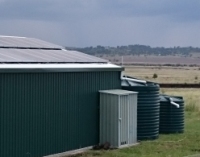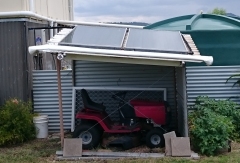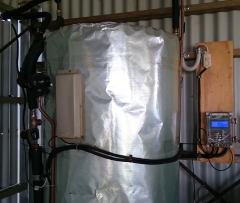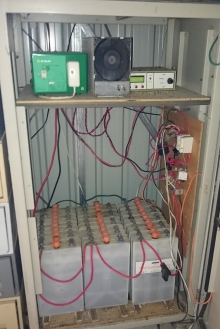 |
|
|
Site Navigation
Projects & Information
»General Information»Wind turbine Projects »The F&P Smartdrive »Electronic projects »Microcontroller projects »Miscellaneous Kits & Parts
»Basicly Natural Pty Ltd»PVC & Aluminium blades »Scale model farm windmills »Price Watch Discussion Forums
Handy Links
»Wind»Solar »Electric Vehicles »Electronics »Micro Controllers »General Interrest About TheBackShed Getting Started Privacy Policy |
Water My water is tank water, and I have 4 tanks and 3 pumps to feed various taps. Over 45,000 litres all up. I have 240 m2 roof space to collect rain water, plus I pump water up from a creek for watering the garden, lawn, etc. I seam to have ample water, so don't need a water bore at this time. Septic Nothing special here, designed by an engineer and put in by my plumber. The size was based on the number of bedrooms, and as my house could accomdate 5 people, the septic was designed to suit. There's the underground tank, and a couple of evaporation trenches which are bacially pipes with lots of little holes, about 30cm underground. The system takes care of itself, just dont flush anything that wont disolve and break down, and restrict the fats and oils you wash down the kitchen sink. Kitchen For cooking I used a microwave and gas cook top, later adding a gas oven. Electric heating for long periods needs to be avoided at night or on overcast days, its very wasteful of energy. Typically at night I use my gas stove, microwave, electric kettle, rice cooker, etc. Appliances like the microwave and kettle draw over 1,500 watts, but are only run for a few minutes. Rice cookers ( bread makers, small toaster ovens, etc ) are usually less than 500 watts, so can be run for much longer. Electric fry pans, ovens, grills, etc user over 2,000 watts, for long periods, so not a good idea except during the day when you have ample sunshine. Thing is, my system could happily power these high current loads like a fry pan or grill, but at a cost to the battery bank. The more you drain the battery bank each night, the shorter its life. So by being kind to your batteries, you can expect to dramatically increase their life, and reduce your living costs. I love my gas cook top and oven. The cook top was picked up at a local swap meet for $70. The oven, a Westinghouse, was bought new from the local Betta Electrical outlet in Pittsworth, near Toowoomba. At around $1050, modern gas ovens are more expensive than electric, but use little gas, don't smell, and cook great! The gas lines were installed by a licensed plumber, and I feed the system with a 9kg gas bottle. The 9kg bottle lasts about 6 months with normal daily cooking. My fridge is nothing special, I've had it for over 10 years and its been good. Provided you don't leave the door open, its power consumption has never been a concern. At times I've run 2 fridges when I have guests staying over. If your looking for a new fridge, its power usage should be a important consideration. 12v System
|



